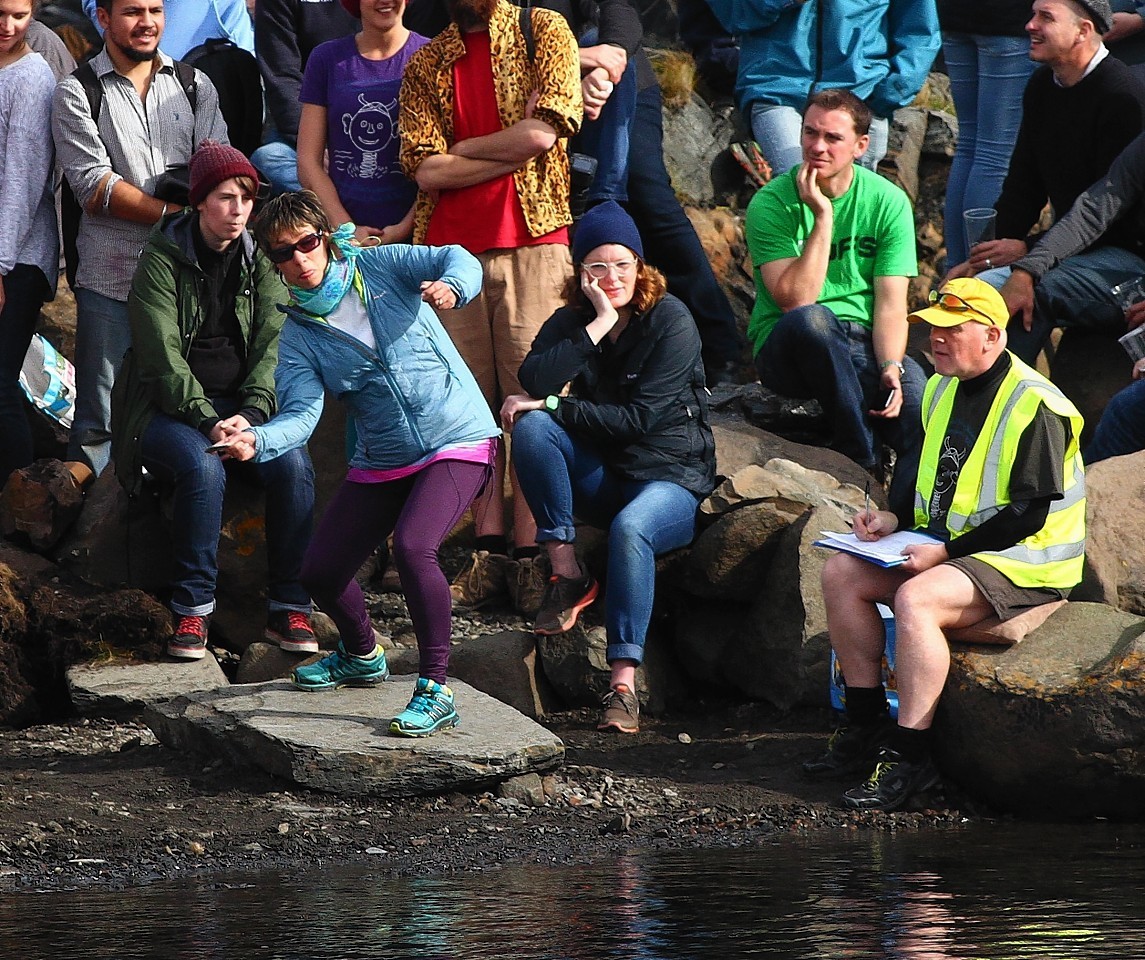Hundreds of competitors flocked to a tiny Argyll island yesterday for the 19th annual World Stone Skimming Championships.
Dutch, Swiss, Americans, Malaysians and Zimbabweans were among the contestants chasing success on Easdale, the smallest permanently inhabited island of the Inner Hebrides.
But it was last year’s champion, Dougie Issacs, of Blairgowrie, who triumphed again after beating three others who tied with him in first place in a “throw-off.”
During the competition all four men had struck the back wall of the island’s slate quarry, which is 206ft away, and went into a three-stone throw-off in which a cumulative total was taken.
In the end, Mr Isaacs emerged victorious from a field of 350 competitors with an impressive total of 554ft.
This is the seventh time the Blairgowrie man has scooped the top prize in 11 years.
Event organiser Donald Melville said: “The weather was fantastic and the competition was another success. It was sunny and a wee bit windy and there was a chop in the water and that made it more interesting. Everyone really enjoyed it.
“The popularity of the event is probably plateauing out because we can not get many more people into the island on the ferry, which runs back and forth all day as it is.
“The competition is massive for the island because we have 60 people living here and that is multiplied by 10 for the day.”
Also among the winners yesterday was Mr Melville’s son, Jamie, 26, who won the prize for best local skim – a distance of 193ft.
Local boy Joe MacVicar, who is just eight, also managed to toss the slate a distance of 147ft.
The arena for the championships is a disused quarry which is flooded with a mixture of salt water and rainwater, and is located on an island which was once the centre of a thriving Scottish slate mining industry.
The championships are held every year on the last Sunday in September.
Anyone of any age and any level of skill can enter, and each competitor is allowed three skims using specially selected Easdale slate skimming stones.
For a skim to qualify the stone must bounce at least three times – it is then judged on the distance achieved before it sinks.
The event has become so popular that the number of entrants this year had to be capped.


